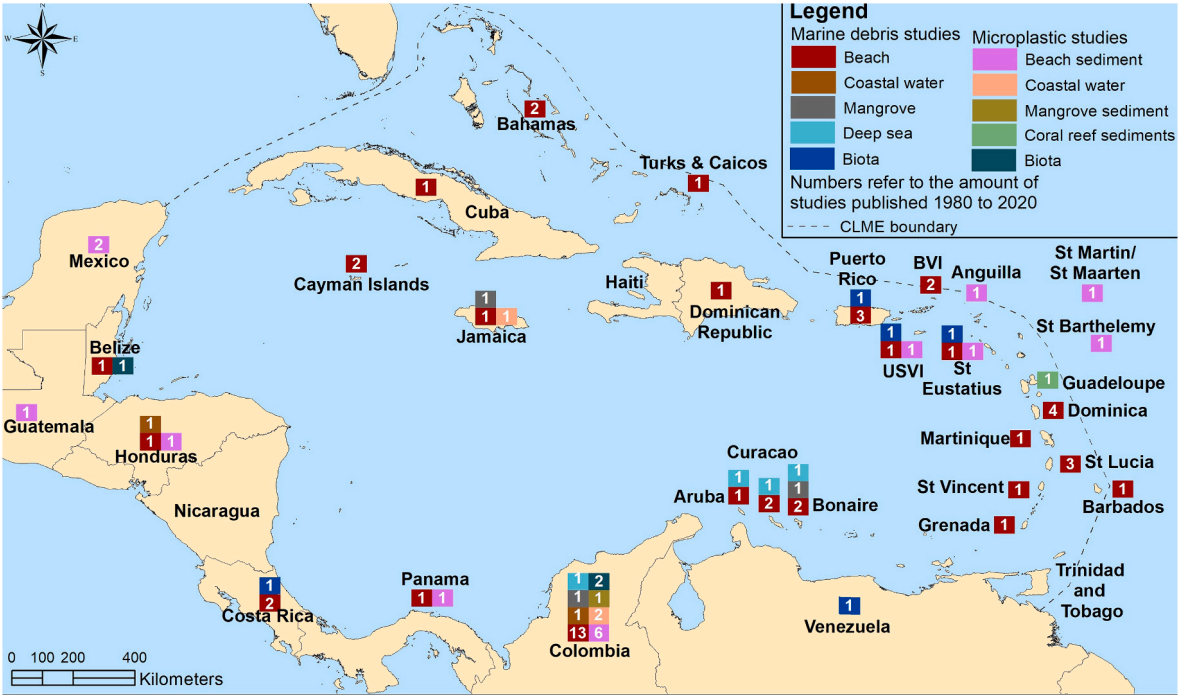Introduction
The research on the effect of plastic pollution on marine life takes on different forms, providing ample information for considering how the materials influence biodiversity, survival, and reproductive rates. Traveling with the currents, debris from improperly utilized plastics creates a new ecosystem on the bottom of the ocean floor (Andrady, 2022). While using different methodologies, the studies agree that plastics strongly impact the marine ecosystem and disrupt the lives of most organisms (Compa et al., 2019; Horton, 2022; Rognerud et al., 2023). The following review reveals the adverse effects of plastics on the marine ecosystem.
Historical Context of Plastic Pollution
The sources considered in the discussions about plastic pollution present experiments and theoretical investigations. For example, the literature review by Issifu and Sumaila (2020) finds that the topic of water pollution began appearing in scholarship in the 1960s when it was discovered that ingestion of plastics by fish led to increased deaths among seabirds (Issifu & Sumaila, 2020). In the following decades, the research found that approximately five trillion plastic pieces were floating in marine waters, excluding the potential debris on the ocean floor (Issifu & Sumaila, 2020). Thus, the prevalence of plastic pollution is high, as is its effect on marine biodiversity.
Case Study: The Mediterranean Sea
These conclusions are further supported by another investigation that considers one marine ecosystem. Compa et al. (2019) examine the Mediterranean Sea and the risks of organisms ingesting plastics. The results of the field exploration reveal that high-risk areas may not be the most polluted ones. Still, those with the largest species’ range, meaning that the point of contamination does not limit its impact to the immediate area (Compa et al., 2019). The danger is especially evident in coastal areas, as they have the highest volume of plastic debris and diverse organisms (Compa et al., 2019). Horton (2022) supports this finding and states that it is especially prevalent in countries with limited or non-existent waste management systems. The same results are present in the Caribbean Large Marine Ecosystem (CLME), according to La Daana et al. (2022). A high number of studies report marine debris in coastal regions, which can be seen in Figure 1.

Oceanic Distribution of Plastics
Nevertheless, the effect of plastics is wider than that of areas where plastic is disposed of directly. Compa et al. (2019) also discovered that plastic travels across the ocean at increased speeds and can reach species far away from coastal regions. The pollutants also break down, becoming more challenging to locate and clean. Thus, marine diversity in all parts of the global ocean is at risk of ingesting plastics, with coastal areas being the most exposed to pollution and its effects.
Toxicity of Ingested Plastics
The toxicity of this interaction with plastic is demonstrated in experiments with marine organisms. Avio et al. (2015) test such materials as polystyrene and polyethylene to see whether their ingestion is dangerous for marine organisms’ survival. The use of mussels in the investigation reveals that microplastics easily infiltrate the body, appearing in digestive tissues and gills, implying that they are consumed through several pathways (Avio et al., 2015). After being ingested, the plastics have a toxic effect, reducing the species’ survival and changing their genetic profile (Avio et al., 2015). As a result, the mussels experience changes in the antioxidant, lysosomal, and other reactions (Avio et al., 2015). Microplastics affect the organisms’ survival rates by suppressing the activity of receptors responsible for immunological responses (Avio et al., 2015). These findings explain how plastics slowly affect water organisms’ health and declining diversity.
Conclusion
Plastic pollution has been a crucial topic in environmental studies for several decades, and its effects on marine ecosystems are well-documented. The volume of plastic debris in the global ocean is massive. While the waste accumulates near beaches and ports and poses a high risk to coastal diversity, it can quickly disseminate throughout the water and disrupt species’ survival on the ocean floor. The degradation of plastics produces toxic materials, which, when ingested, can change the organisms’ genetics.
References
Andrady, A. L. (2022). Plastics and the ocean: Origin, characterization, fate, and impacts. John Wiley & Sons.
Avio, C. G., Gorbi, S., Milan, M., Benedetti, M., Fattorini, D., d’Errico, G., Pauletto, M., Bargelloni, L., & Regoli, F. (2015). Pollutants bioavailability and toxicological risk from microplastics to marine mussels. Environmental Pollution, 198, 211-222. Web.
Compa, M., Alomar, C., Wilcox, C., van Sebille, E., Lebreton, L., Hardesty, B. D., & Deudero, S. (2019). Risk assessment of plastic pollution on marine diversity in the Mediterranean Sea. Science of the Total Environment, 678, 188-196. Web.
Horton, A. A. (2022). Plastic pollution in the global ocean. World Scientific.
Issifu, I., & Sumaila, U. R. (2020). A review of the production, recycling and management of marine plastic pollution. Journal of Marine Science and Engineering, 8(11), 945. Web.
La Daana, K. K., Asmath, H., & Gobin, J. F. (2022). The status of marine debris/litter and plastic pollution in the Caribbean Large Marine Ecosystem (CLME): 1980–2020. Environmental Pollution, 118919, 1-13. Web.
Rognerud, I., Hurley, R., Lusher, A., Lise, N. B. I., & Eirik, H. S. (2023). Addressing microplastics in a global agreement on plastic pollution. Nordic Council of Ministers.